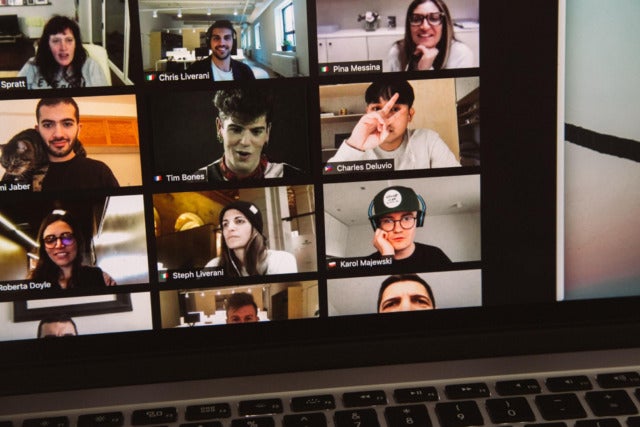Guest blog by Christina Wells – VP, People @ PLANOLY
2020 has been one of the most challenging years our country’s had to face. No employer could have possibly guessed what awaited them three months into the year with a global pandemic shocking the economy. Many companies have had to make serious changes to adapt to this new reality. Compared to last year, when the U.S’s unemployment rate was at a record low, our unemployment rate is now at a record high resulting in an influx of people seeking jobs. Talent acquisition teams across all industries have had to adjust, but with hiring volumes picking back up and job creation on the rise, now is the perfect time to reevaluate and build your team to meet your new needs and expectations.
A year ago, when a recruiter posted about a job on their company’s career page, they would receive very little activity. Now, if a recruiter posts about a position, they can expect hundreds of applications in the first week. Even though there are many more applicants than last year, it doesn’t make the hiring process any easier – maybe even the opposite. Recruiters need to be more diligent than ever before to ensure their hiring process results in hiring quality candidates. But it doesn’t have to fall solely on the recruiting team to come up with a strong interview process. Lean on your hiring managers, the interview panel, and the leadership team to define, align, and decide who makes the ideal candidate to join your company!
Getting prepared for a long string of interviews requires planning and preparation. Use this step by step guide and to increase the quality in your recruiting program!
Get started by creating a full job profile

When a hiring manager reaches out to the recruitment team to get a job filled, ensure the position is thoroughly defined and well thought out. Ask the hiring manager for their present and future needs for this role.
A complete job profile consists of 3 components:
- Job description
- Interview plan
- 30-60-90 day plan for the hire
Empower the hiring manager to write the job description, not the recruiter. The hiring manager knows better than anyone else which gaps need to be filled on the team, and where the new hire can step in and add value. I start by telling the hiring managers to write a list of bullet points of key responsibilities. Then I have the recruiting team take it from there to add language around the company culture and audit the job description for any biases such as gender or age bias.
From there, ask the manager to build an interview plan. An interview plan guides the interviewer through the interview process. They can focus on specific areas to ensure they’re asking relevant questions pertaining to the role. This could range from honing in on technical skills, behavioral problem solving, or exploring the candidate’s alignment to the company’s core values. Having each interviewer focus on 2-3 core topics allows them to peel back the onion and extract more detail rather than only staying surface level in their questioning.
The last component of a job profile is the 30-60-90 day plan. Candidates want to know what their first 90 days will look like in their new role. Making sure your recruitment team has this information upfront enables the recruiter to begin setting expectations from the get-go.
Host an interview kickoff

Before the interview team meets the candidates, get all the interviewees together for a kickoff. The hiring manager leads the meeting and goes over what they are looking for in their ideal candidate. This is also an opportunity for the interview team to ask questions, debate, and align. Not aligning before meeting candidates could cause the time to fill metric to extend because the interviewers may end up calibrating as they go in real-time versus being prepared in advance.
Taking the 20 minutes, in the beginning, to talk about the ideal candidate for this role will save your team weeks, even months, on the back end.
Consistency with each candidate’s experience is a must
Make it standard practice for all candidates to speak with a recruiter before talking to the hiring team. The recruiter can touch on basic parameters like salary and career expectations, alignment to the company’s values, and basic fit.
From the recruiter stage, impress upon the interview team to be consistent with the number of steps, the people they meet, the topics covered, and the applicant’s assignments. This will keep bias and unfair treatment out of the interview process altogether. Not allowing variables to enter the interview process will keep all candidates an equal playing field.
Gather evaluation feedback
Make it a habit to add a short 15 minute period for the interviewer to write notes and submit evaluations about each interview. An evaluation helps the interviewer and recruitment team keep track of potential new hires and assure that the feedback stays objective. I’ve had interviewers mix up candidates before because they weren’t keeping track of their notes.
Most applicant tracking systems, like JazzHR, will have the ability to create customized evaluations.
Host a roundtable discussion
After everyone meets a candidate, gather the interview team together to share feedback. Giving everyone a voice empowers the team to bring different perspectives to the table. To prevent groupthink, ask individual contributors to share first and then work your way up the management chain. If a leader were to share their feedback first, you might find junior-level interviewers swaying their opinion to appease the leader.
Set the tone that different views are welcomed. At the end of the day, it’s up to the hiring manager to decide if the candidate is hirable based on what they gathered in a roundtable. A skills gap identified doesn’t necessarily disqualify a candidate. The hiring manager may decide that a particular skill is coachable and that their other skills outweigh what the candidate doesn’t possess.
Make a firm decision

I always tell recruiting teams to use the motto, “so so equals no.” If your interview team has doubts about a candidate and the only reason they want to make the hire is that they are tired of interviewing, it’s best to pass. Waffling back and forth to convince yourself that the candidate meets the criteria is a slippery slope to compromising quality. Be respectful and pass so the candidate can continue their job search without being strung along by your company.
When hiring quality candidates – always remember – a good process shall set you free. Find consistency in your recruiting program, hold the hiring managers accountable for their part, and don’t compromise when interviewing fatigue sets in. Recruiters have one of the most critical jobs in the organization. The people you hire today build the company for tomorrow.
About the Author
Christina Wells is the VP, People at PLANOLY, and a loyal JazzHR customer and enthusiast. She is a regular contributor to the FloRecruit blog and more. Connect with her about recruiting, human resources, and learning & development best practices on Linkedin.





